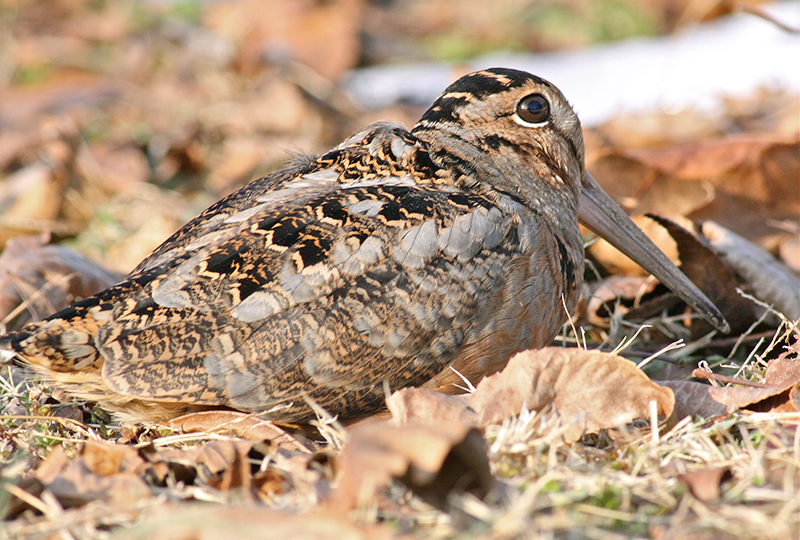| Infrequently Seen |
Spring: American Woodcocks breed in the Washington metro area. They migrate into and through the area, and they sometimes show up at Monticello Park during the second or third week in March.
Fall: American Woodcocks are extremely rare at Monticello during fall migration.
Where to See Them in the Park
American Woodcocks typically are flushed from one of the paths on the ridge or the knoll. You rarely can have a long look at one.
Physical Description

Woodcocks have excellent camouflage. They look like leaf litter, and they usually try to avoid being seen by freezing on the ground. When you get too close to where they are trying to hide, they explode into the air, which can be quite startling. They have a plump body and short wings, so they need to flap hard to become airborne. They have a long bill and large eyes.
Vocalizations
The call of the woodcock is a flatulent peent. Woodcocks also make sounds when performing display flights at dusk and dawn, but you are not likely to see this at Monticello. One of the closest places to observe displaying woodcocks is in a meadow near the end of the hike-bike trail at Huntley Meadows.
Hear the vocalizations and sounds of the American Woodcock.
Notes
Woodcocks are strange birds. Their eyes are near the back of their head so that they can watch for predators while using their long bill to probe for worms. They not only can see a full 360 degrees without moving their head, but they also can see with binocular vision above their head, both backward and forward. The cock in cocker spaniel comes from them being used to retrieve small game such as woodcocks.
Origin of Names
Common Name: American to distinguish it from the Eurasian species. Woodcock means a chicken-like bird who lives in the woods.
Genus Name: Scolopax is Greek for woodcock.
Species Name: Minor means smaller.
American Woodcock video footage
Return to the Index
